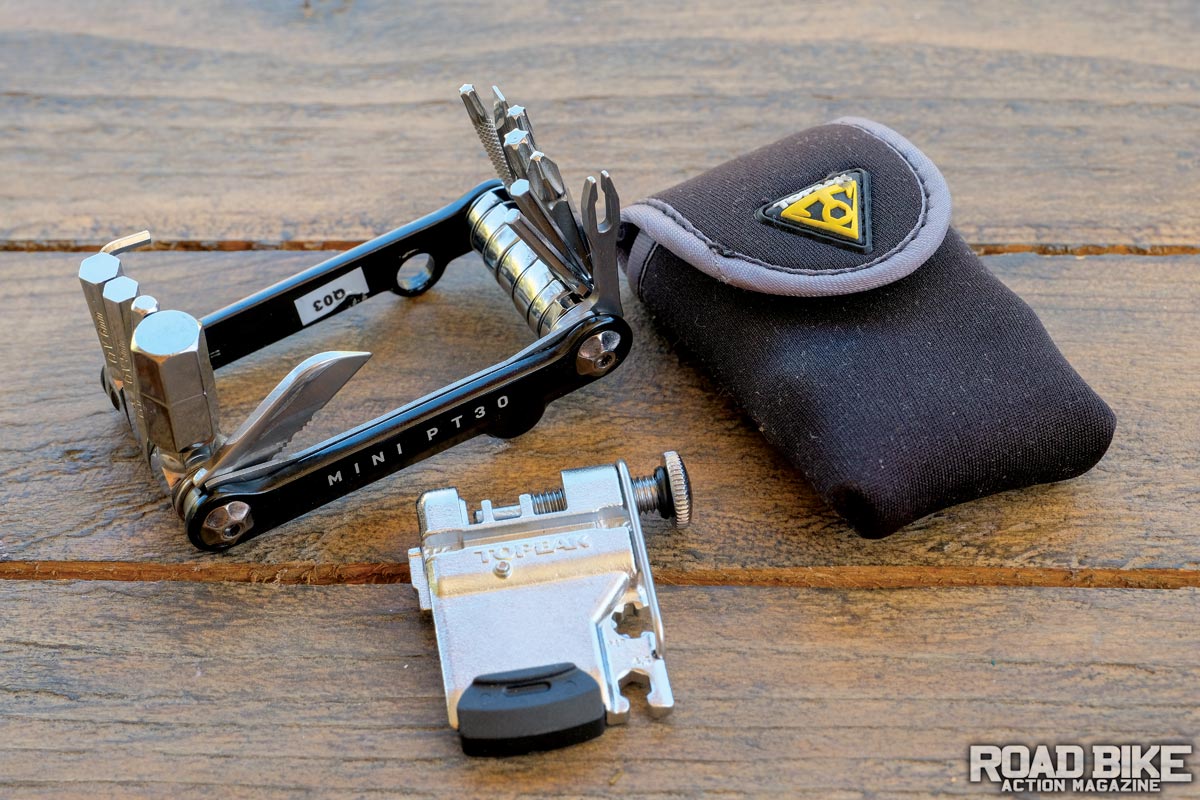By Troy Templin
If you’re like us, you’ve no doubt been on a group ride when someone suffered a flat tire and they have neither the tools or even a spare inner tube to make the fix. And then they stand next to their bike with that dumb, helpless look on their faces. Maybe, in fact, that was you at one time!

We’re always amazed at how frequently we ride with people who think they need nothing more than a phone tucked into their jersey pocket to help them out of a jam. In addition to a spare tube and tire iron, it also makes good sense to bring a multi-tool along on every ride, because you never know when that “anything can happen” moment arrives and a 5mm Allen is needed.
The problem with a majority of multi-tools is that while they’re decked out with Allen wrenches and maybe a flat-head screwdriver, the one tool that can be most helpful is not there—a chain breaker. And this is especially true with gravel riders who find themselves out back where non-Uber drivers will find you.

FROM OLD TO NEW
No doubt road bike technology has come a long way, and there is much that separates a modern bike from one built just two decades ago. But whether you ride an old bike with downtube shifters and steel rims or a new bike with disc brakes, push-button shifters and carbon wheels, the one thing that unites every road bike on the road today is the chain.
For some reason, chains seem to have a knack for failing at the most critical moments or in the most remote off-grid locations where a call for help is a long way off. You know, the valley between to epic peaks where there is no cell reception or easy way out but to walk. Sometimes it is with a group of friends on a fun ride that are all left making the decision to leave you behind only to have to come back for you in a vehicle later.
In my many years of riding, I haven’t needed a chain breaker all that often, and, to be honest, I have helped more people that needed one than actually fixing my own chain. But, what is clear is that in almost every case it was a complete godsend and rectified an otherwise unfixable and eventful situation.
HOW IT WORKS
Chains are fairly simple, and to use a chain breaker, you really just need to understand the three basic parts: the inner plate, outer plate and pin. This pattern repeats itself to create a chain (that is the basic version). There is likely a master link, which is basically an outer plate that snaps together to complete a chain.

Method One
When a chain breaks, you will have an outer plate that is likely bent with a damaged pin and normally an inner plate that is fine. The chain breaker simply allows you to press the pin out of the other end of the damaged outer plate, removing it from the system. Normally, I personally would carry a spare master link and connect the two inner plates and be on my way.
Method Two
If you don’t have a spare master link, then it is a bit more tricky. You will need to go to the next outer plate and partially press out the pin that is nearest the last inner plate. You will need to press it about 75–85 percent of the way out, but make sure it doesn’t come all the way out. You will then need to remove the inner plate completely. Then you can put the inner plate from the other end into the outer plate with the partially removed pin.
This next part is the tricky part. You now need to press the partially removed pin back in. This is where you need to take your time and having a good chain breaker is key. The pin needs to go back into the other outer plate but not too far. An easy way to see if it is correct is to test the movement of the chain at that pin. If it moves and the pin looks flush to the outer plate on both ends, you are mended.

Remember that if you use the second method with no extra master link, the chain is compromised and needs to be replaced immediately. This repair is only to get you home, and you should limit cross-chaining and really heavy torque on that ride home. If you had a master link and used that method one then you are likely good to roll like normal but you should inspect the chain for wear because something did cause it to fail.
Here are a few of our favorite multi-tools that have a chain breaker. I would also stress that most chain breakers found on a multi-tool are not intended for shop use but more of an emergency tool. I would always recommend
getting a regular chain breaker if you are going to be installing a new chain and maintaining your own drivetrain at home.





Comments are closed.